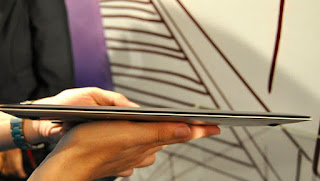With all the recent additions in technology gadgets, one more abbreviation has come up – BYOD – which stands for “bring your own device”. It simply refers to the use of personal mobile communication tools at work.
As we have seen recently with the popularization of smartphones and tablets, our technology behavior is changing: People are carrying their portable devices everywhere. As a result, an issue of multiple and/or overlapping devices has arisen at large companies, which often provide their employees with their own technology. Therefore, users must now become accustomed to a mix of devices in order to accomplish their duties.
Some people complain that it would be better if they could choose what kind of device they work with in the office. It can be confusing and time-consuming, for example, to remember the set-up for two different operating systems. Wouldn’t it be better for us to choose which operating system we are more comfortable and familiar with? In this way, professionals would have greater freedom and flexibility to use the hardware and software that best meets their day-to-day needs.
 Luckily, some companies are recognizing the value of giving their employees more technology freedom. It is getting more and more common for people to bring their own laptop, Mac or PC, to work. Individuals are using operating systems such as Windows, Linux or Mac OSX on laptops, netbooks, and tablets depending on their personal preference, and all of these are mixing together in the corporate environment.
Luckily, some companies are recognizing the value of giving their employees more technology freedom. It is getting more and more common for people to bring their own laptop, Mac or PC, to work. Individuals are using operating systems such as Windows, Linux or Mac OSX on laptops, netbooks, and tablets depending on their personal preference, and all of these are mixing together in the corporate environment.Unfortunately, despite some companies’ efforts to permit greater technology freedom among their employees, it is not always simple. For example, with a mixing of operating systems and devices, how does the company manage technical support, or ensure security for the information stored on those devices? With this new BYOD trend becoming more common, there is no way to avoid many questions and challenges. It’s time for companies to deal with this issue.
When we talk about what should be allowed or denied regarding technology in a company’s policies of usage, there is an important point to consider, which is the legal regulations. As an employee has access to his personal device anywhere and anytime, who is in control of the company’s proprietary information? How does a company control an employee when he is not in the office if he has access to the company’s information whenever he wants? If an employee is up late at night at home checking his personal emails, and he decides to answer a business email, should this constitute overtime work? What about if he answers a text message from work on the weekend or during the week on his lunch hour?
For starters, it would be wise for companies to begin to think about these issues and setting the appropriate policies of usage so employees are clear on what is expected of them. Companies also need to concern themselves with the information stored on the mobile devices. For example, a company could be developing a product that is not ready for marketing but for some reason information or images of the product are accidentally spread over the Internet. Thus, companies should consider having employees sign confidential disclosure agreements to avoid information leaks.
Additionally, companies need a policy for loss, damage, theft or breakdown of personal equipment. If an employee is making daily use of his personal mobile devices for his company, then the company must assume the responsibility to immediately replace or repair the device if it is stolen or damaged; otherwise their competitors can take advantage of this loss. Also, if a loss or theft happens, how should this be treated? Does the company have the right to investigate the equipment and check for the minimum use of information security, illegal software, piracy or unauthorized and inappropriate content? Even if an employee’s personal devices are working fine, if he is using them for company projects, does the company have the right to access those devices for security purposes?
Initially, BYOD sounds very complex and hard to manage, but it is already happening and thus will require more and more attention in business. The sooner a company is prepared for BYOD issues, knowing the ways to manage and control the scenario, the faster and more safely the issues will be addressed.
One policy currently being used by companies to address BYOD issues is called Mobile Device Management, which allows companies to focus on mobile devices allied with network administrators to apply security policies according to the characteristics of each type of access for smartphones and tablets.
In conclusion, there are many questions and issues raised by BYOD. According to specialists in technology, the place to begin is with the process of education. There must be the creation and formalization of usage policy, plus training, acquisition, and installation of technologies required to manage the processes such as Mobile Device Management. The challenge is to provide convenience and productivity for employees and to keep their equipment and personal devices secure. As companies rely more and more on technology to do business, addressing this issue will be a key to success.
* Article published on Curitiba in English.











